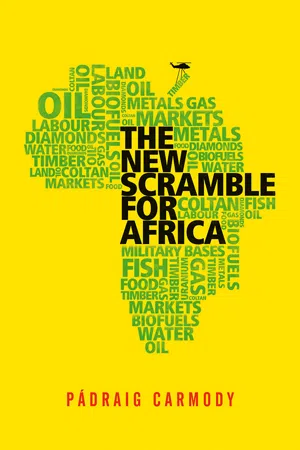Closing the Development Gap
Closing the development gap refers to efforts aimed at reducing disparities in economic development and living standards between different regions or countries. This involves implementing policies and initiatives to address issues such as poverty, inequality, and access to resources and opportunities. The goal is to promote sustainable development and ensure that all people have the chance to thrive and prosper.
4 Key excerpts on "Closing the Development Gap"
- eBook - ePub
Geographies of Development
An Introduction to Development Studies
- Robert Potter, Tony Binns, Jennifer Elliott, Etienne Nel, David Smith(Authors)
- 2019(Publication Date)
- Routledge(Publisher)
...Far from it, the evidence shows all too clearly that contemporary global processes are leading to increasing differences between places and regions and rising social inequality within and between countries, and thus to the generation of progressively more unequal patterns of development and change, and associated social, economic and environmental conflict. This is evidenced in a range of dimensions including the continuing ‘digital divide’, the selective benefits of the MDGs, the differential effects of the Global Financial Crisis, the varying effects of climate change impacts, and the playing out of political tensions, particularly in the Middle East. Hence, the emphasis is on multiple geographies of development. Part II (Chapters 5, 6 and 7) covers what may be regarded as the basic components of the development equation – people, environments, resources, institutions and communities – together with the increasingly complex and multifaceted interconnections that exist between them. New sections have been included on the effects of the HIV/AIDS pandemic, gender, the position of children in conflict situations and the effects of ageing populations on development processes. In considering resources and environment, this edition gives further attention to issues of resource scarcity and global environmental changes, including climate change, but also to concerns that Planetary Boundaries may have been crossed and the ‘services’ provided by ecosystems for human well-being irreversibly degraded. Greater attention is given to the equity and justice challenges of moving to lower carbon and more sustainable development paths in future. The inclusion of a chapter specifically dealing with institutions in the development process serves to exemplify the utility of the overall approach adopted in Geographies of Development...
- eBook - ePub
Economic Geography
Places, Networks and Flows
- Andrew Wood, Susan Roberts(Authors)
- 2012(Publication Date)
- Routledge(Publisher)
...The Ruhr industrial region in Germany is no longer the manufacturing powerhouse it once was, for example. Nonetheless, the fact of uneven development has endured. The gap between the richest and poorest regions of the world is staggering. Development theory, in the guise of modernization theory, appeared to offer at once an explanation for the inequality, and a remedy. Economic geographers, especially transport geographers, made major contributions to the development project under modernization theory. However, it was the more structural and critical approaches of dependency theory and world systems theory that captured the imaginations of later economic geographers. Systemic explanations of the persistent gap between rich and poor that were framed at a global scale held enormous appeal for many economic geographers. Political geographers too found value in such approaches. However, at times it seemed as if economic geography was in retreat from global analysis, preferring instead to focus on regional or urban dynamics, and concentrating on the global north. Meanwhile, a growing cadre of development geographers, many with applied interests in development, concentrated on the global south. Currently, economic geographers are once again concerned to address questions of global inequity, and perhaps divergence based on sub-disciplines has run its course (Pollard et al. 2009). As this chapter has aimed to show, political economy approaches offer economic geographers the frameworks for understanding and explaining persistent inequities between regions at the global scale. As the next chapter explains, such approaches have also proved valuable for examining unevenness at the sub-national and urban scales. EXERCISE 6.1 Go to the United Nations Development Programme (UNDP)’s website (http://hdr.undp.org) and click on the latest Human Development Report. The annual reports each have a theme, but there is always a section of Tables after the main text...
- eBook - ePub
- Gerard Roland(Author)
- 2016(Publication Date)
- Routledge(Publisher)
...These data give us a better sense of what we are dealing with when we consider development issues, and they help to inform us about the economies of different countries. The development gap is greatest in sub-Saharan Africa and South Asia. We presented some success stories in health (the Kenyan experience with treated bed nets and the fight against malaria), education (the South Korean education system), and urban development (the experience of Naga City in the Philippines). The Evolving Development Gap We examined data on economic growth in the different countries and regions of the world and discussed the fact that some developing countries, mostly in Asia, have been growing rapidly and have begun to close the development gap. Other countries, in particular in Africa, have unfortunately seen the development gap increase in recent decades. Stories of Economic Catch-Up and Decline We presented some historical data on the process of economic catch-up that took place in Japan and Germany since the end of the 19th century. We have also seen examples of the opposite tendency, that of decline, in particular the case of Argentina, clearly not the only case of economic decline in history. Key Terms development gap purchasing power parity (PPP) gross domestic product (GDP) per capita secondary school enrollment rates industrial frontier universal bank infant mortality rate urbanization rates life expectancy Review Questions 1. Go to the following World Bank webpage: http://www.app.collinsindicate.com/worldbankatlas-global/en-us In the search box in the upper right corner of the page, enter the following: GDP per capita, PPP (current international $). A map of the world will appear. If you click on the Play button in the center below, you will see the evolution of the map since 1980...
- eBook - ePub
- Padraig R. Carmody(Author)
- 2013(Publication Date)
- Polity(Publisher)
...The central idea is that, as a result of its geography, Africa suffers from a ‘proximity gap’ (Naude 2009). The solution presented is to reduce distance through investment in infrastructure and through economic liberalization – such as tariff reductions, for example – to make borders ‘thinner’. The problematic of underdevelopment then is presented as lack of contact between the First and Third Worlds, although – somewhat surprisingly – the role of China and other rising powers is ignored. Underlying this idea of the proximity gap is the idea of development as being promoted through a process of ‘contagious diffusion’ (‘development is contagious’ (World Bank 2009, p. 118)), in which it spreads from more to less developed regions, provided that ‘artificial barriers’ to trade and other economic flows of investment and remittances are eliminated or minimized. Implicit in this is the idea of ‘distance decay’: that development is reduced the further away from world markets a country is. There would appear to be some empirical support for this argument. Eastern Europe and North Africa are able to take advantage of their proximity to Western Europe to sell their products more easily there, compared to SSA for example, and thereby also to attract ‘market-serving’ FDI. Consequently, they have higher per capita incomes than much of SSA. However, it does not follow that by reducing trade and other barriers to investment, SSA will ‘naturally’ catch up with these more developed regions. On the contrary there is a (dys)functional global division of labour in place, promoted through policies of economic liberalization, which largely consigns SSA to the position of primary commodity exporter, as manufacturing there cannot compete with production complexes and developmental macro-economic regimes – in China, in particular (Kaplinsky, McCormick et al. 2006)...



